
110 years of ANZAC history in 10 photos
01 April 2025- ANZACspirit
- History & commemoration
From the first commemoration in 1916 to today’s Dawn Services and marches, these powerful images capture the spirit of ANZAC Day through the decades.
As ANZAC Day 2025 marks 110 years since the Gallipoli landings of World War I (WWI), we reflect on how this day of remembrance has evolved.
1. Troops landing at Gallipoli on 25 April 1915
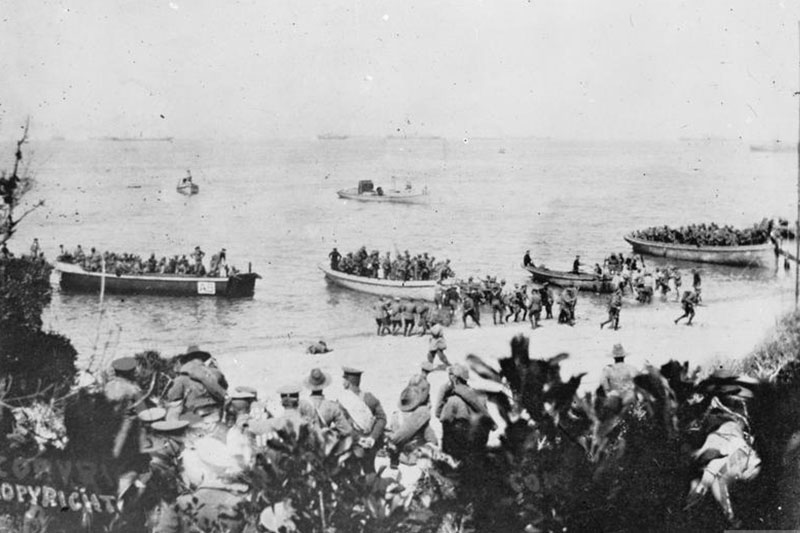
Image: Sgt A. R. H. Joyner (1915), Imperial War Museum Q112876
This iconic photograph was taken by 20-year-old Sapper Arthur Joyner at 8am on 25 April 1915. It shows the men of the 4th Battalion landing at Gallipoli while staff of the 1st Infantry Brigade watch from a sheltered position in the cove. The body of a soldier felled by a Turkish bullet can be seen near the waterline.
2. The first ANZAC Day: London, 1916
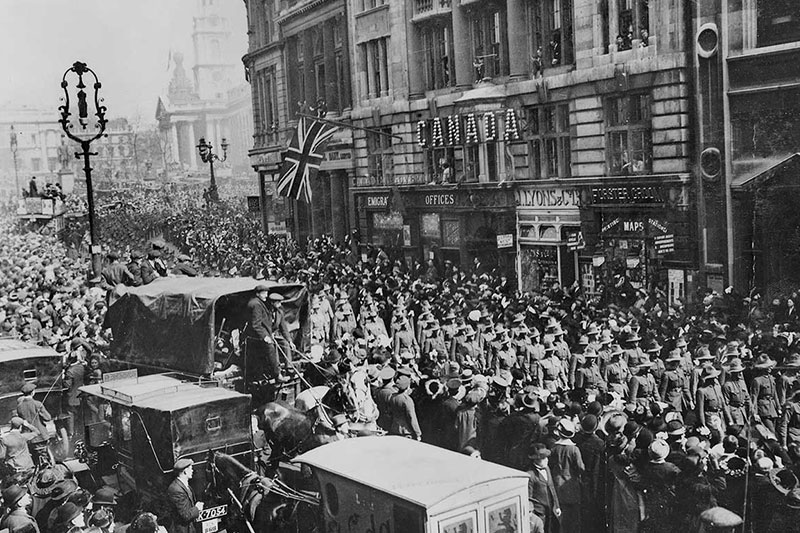
Image: Australian and New Zealand soldiers marching to Westminster Abbey in London on ANZAC Day in 1916. National Museum Australia
On the first anniversary of the Gallipoli landing, the Australian High Commissioners and Agents General in London arranged a sombre ‘celebration’ of the event. Approximately 2,000 Australian and New Zealand troops marched through London to Westminster Abbey for a remembrance service.
3. The first ANZAC Day: Australia, 1916
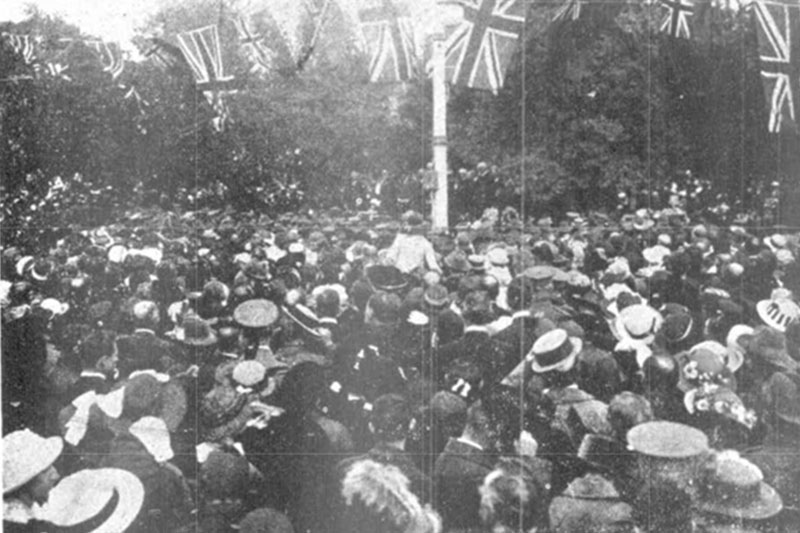
Image: An ANZAC Day ‘celebration’ held in Adelaide on 25 April 1916. The Critic, 26 April 1916, 16
In Australia, the first anniversary of the Gallipoli landing was marked in a variety of ways, with church services and speeches common to most locations. In Sydney and Brisbane, parades of troops were held, with the event also serving as a major recruiting opportunity. In Melbourne, crowds gathered near the Boer War Memorial on St Kilda Road to lay wreathes.
Perth hosted a march through the city, followed by a banquet for the troops, while in Hobart, troops paraded to the Fallen Soldiers’ Memorial in Queen’s Domain. In Adelaide, citizens gathered for a service in Victoria Square.
4. Returned men and nurses participating in the ANZAC Day march in Melbourne in the 1930s
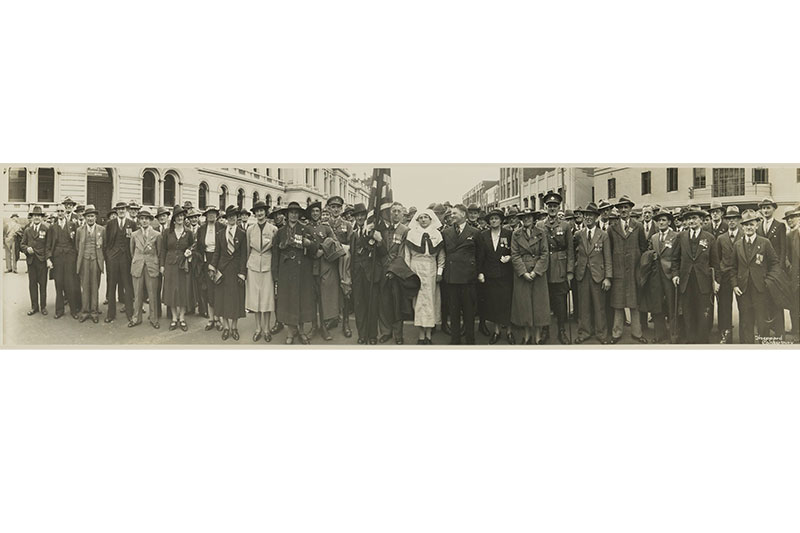
Image: Returned men and nurses gather in Melbourne on an ANZAC Day in the 1930s. J. R. Sheppard (c. 1930s). Museums Victoria Collection
During WWI, members of the Australian Army Nursing Service were the only women permitted to enlist in and serve overseas with the 1st Australian Imperial Force. Nurses were part of ANZAC Day from its first commemoration in 1916, initially observing the march or accompanying invalid returned men in vehicles.
By the mid-1920s, they were eager to march alongside their male comrades, and by 1925, nurses were proudly marching in ANZAC Day parades in Melbourne and Sydney.
5. World War II and the changing appearance of ANZAC Day
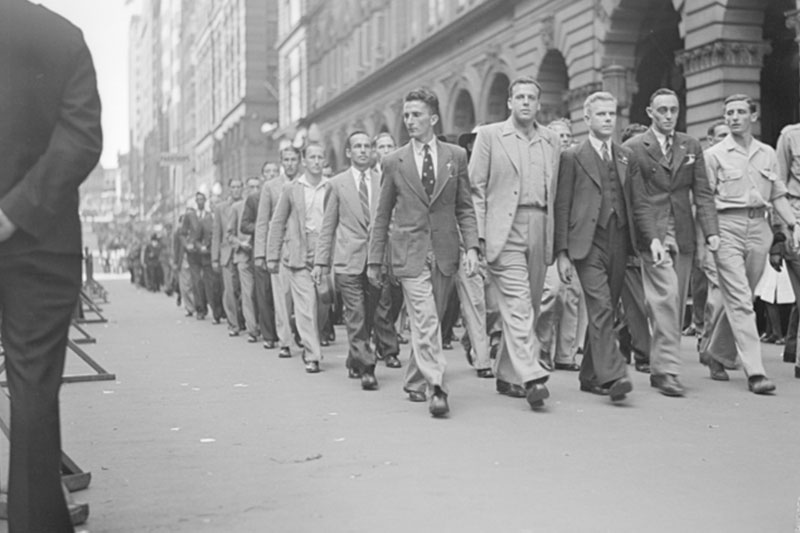
Image: Returned servicemen march past the Cenotaph in Martin Place in Sydney on ANZAC Day 1946. Artist unknown: AWM 127110
After WWII, a younger cohort of service personnel began participating in ANZAC Day, along with more women who had served in the auxiliary services of the Royal Australian Navy, Army and Royal Australian Air Force.
A more subtle change emerged in how veterans referred to themselves; WWI combatants had used the term ’returned men’ or ’returned nurses’ but the younger generation adopted ‘returned servicemen’ and ‘returned servicewomen’ to distinguish their wartime experiences. WWII nurses continued to use ‘returned nurses’ and were joined by Naval and Air Force colleagues on ANZAC Day.
6. ANZAC Day attracts conflict in the 1970s and 1980s
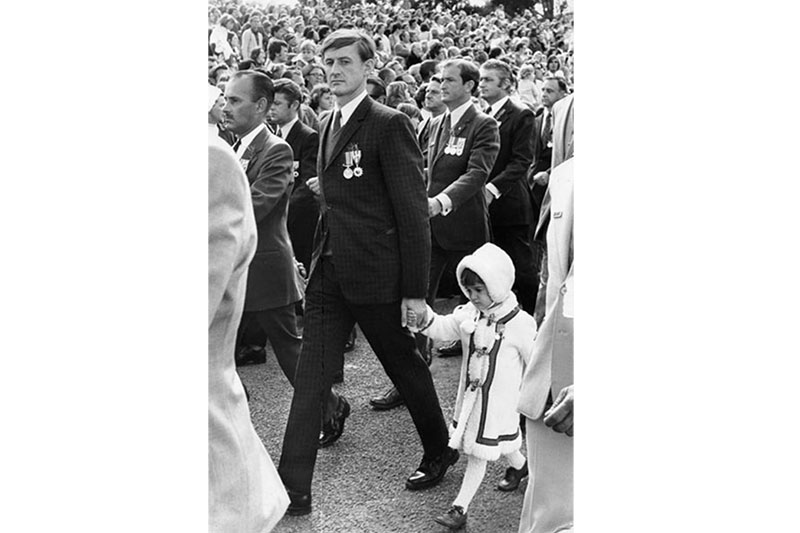
Image: Vietnam veterans introduced another ANZAC tradition in the 1970s: the inclusion of family in the ANZAC Day parade. Photo by Jim Green, courtesy of the ACT Heritage Library, Canberra Times Collection, 1975
By the 1970s and 80s, many commentators predicted ANZAC Day would soon fade away. Not only were parade numbers falling as the ranks of WWI veterans thinned, but the event also became increasingly contentious, with anti-war protesters and some minority groups using the occasion to advocate for political causes or greater inclusivity.
In response to the latter, a new generation of veterans – those who served in Vietnam – began a powerful tradition, bringing their children to march beside them, ensuring ANZAC Day’s legacy continued.
7. Another new ANZAC Day tradition
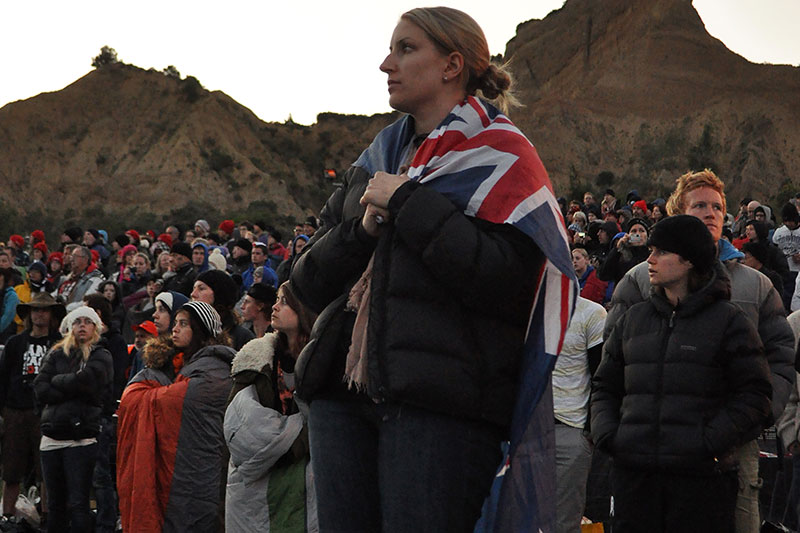
Image: Australians and New Zealanders attending the ANZAC Day ‘pilgrimage’ to Anzac Cove on the Gallipoli peninsular in Turkey in 2012. AAP Image/David Barbeler
Rather than fade away, ANZAC Day experienced a resurgence in popularity during the 1990s. Anzac Cove on the Gallipoli peninsula had long been a popular destination for Australians, but the 75th anniversary of the landing marked a turning point when then Prime Minister Bob Hawke presided over the Dawn Service there in 1990. Attendance at ANZAC Day ceremonies surged, cementing a new tradition.
The annual ‘pilgrimage’ to Gallipoli became a defining feature of ANZAC Day, with images of young Australians draped in the national flag becoming a familiar part of its contemporary iconography.
8. ANZAC turns 100
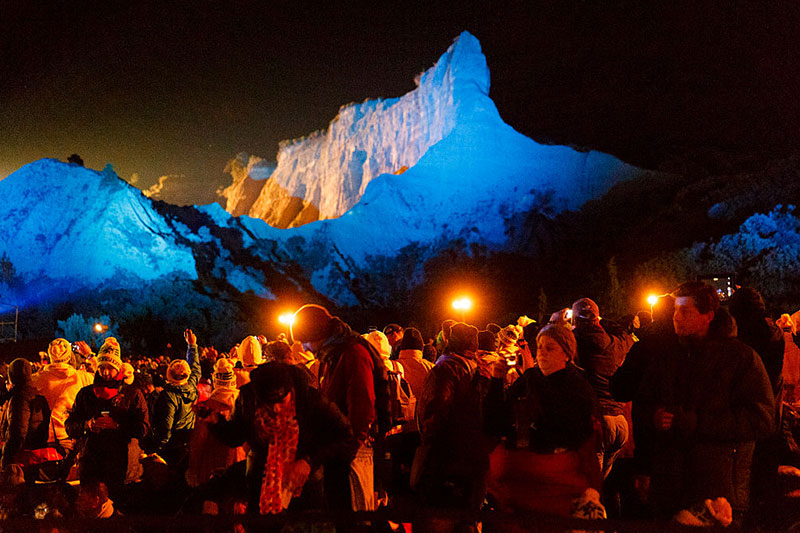
Image: Dawn Service, Anzac Cove, 25 April 2015. Image credit: Tristan Fewings, Getty Images
In 2015, the Australian and New Zealand Army Corps (ANZAC) marked its 100th anniversary. The Turkish Government enforced a maximum attendance of 10,500 at Anzac Cove for the Dawn Service. Australian attendance was capped at 8,000 and New Zealand at 2,000.
In Australia, a ballot was introduced to ensure all citizens had an equal opportunity to attend the event. A total of 42,273 applications were received, with double passes allocated to 400 direct descendants of Gallipoli combatants, 400 veterans and 3,000 general applicants.
9. ANZAC Day in Afghanistan
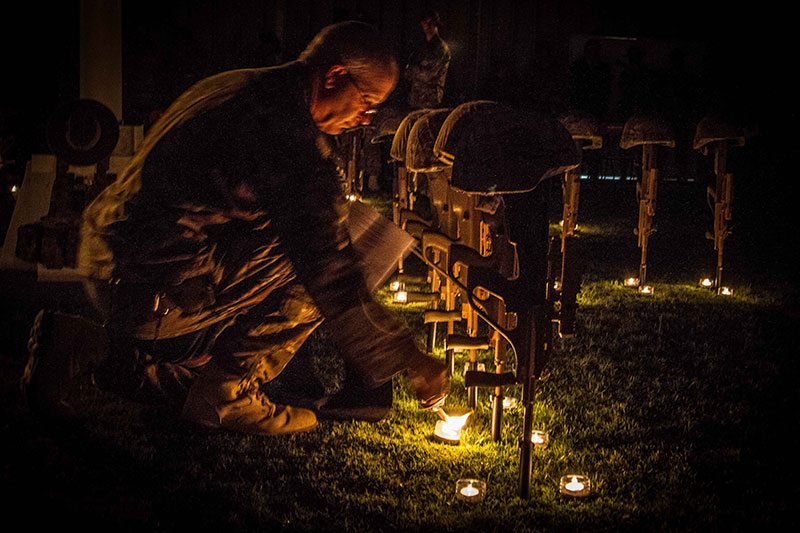
Image: Chaplain Geoffrey Traill lights a candle as part of an ANZAC Day service held for Australian service personnel at Kandahar Airfield in Afghanistan in 2014. Photo by Sgt Clay Beyersdorfer
From 2001 to 2021, Australian service personnel deployed to Afghanistan as part of a US-led multinational force formed in the wake of terrorist attacks on New York and Washington. As during the Vietnam War, ANZAC Day traditions endured, providing a vital way to honour fallen mates and reflect on their sacrifice.
10. The resilience of ANZAC Day
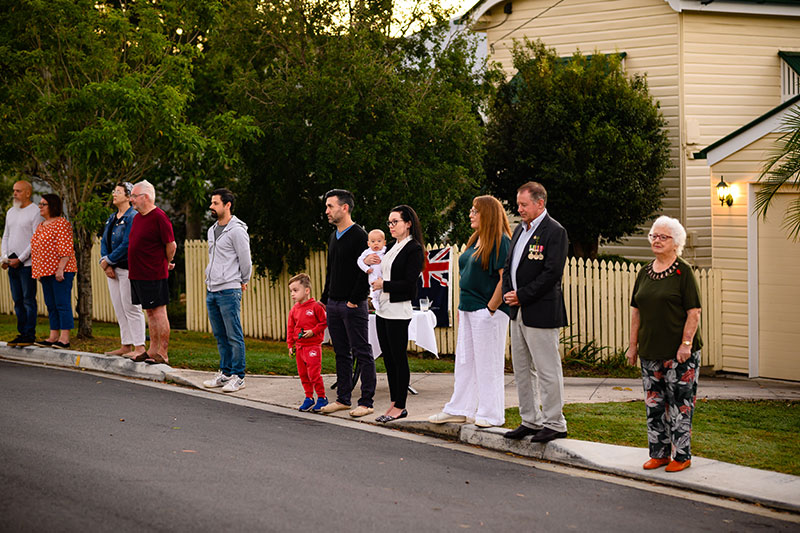
Image: The community of Enoggera participating in ‘Light Up the Dawn’ on ANZAC Day in 2020. Photo by RSL Queensland
In April 2020, the global COVID-19 pandemic led to widespread lockdowns and the postponement of ANZAC Day commemorations. It was not the first time a health crisis had disrupted the occasion. In 1919, the Spanish influenza pandemic swept the world and forced the postponement of Sydney’s ANZAC Day parade.
Rather than foregoing the ANZAC Day experience in 2020, Australians embraced a new tradition: ‘Light Up The Dawn’. Thousands gathered at the end of their driveways in a socially-distanced tribute honouring the fallen and ensuring the ANZAC spirit endured.
This ANZAC Day
ANZAC Day (25 April) is a time to recognise all who have served our nation, and their invaluable legacy.
Wherever you’ll be on ANZAC Day, please join the community in attending a commemorative service.
There’s no greater way to honour those who have served.
